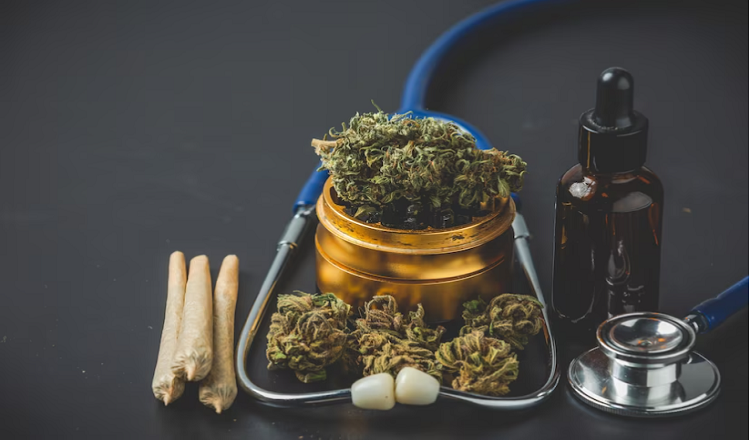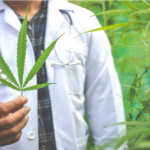
Since its first usage as a medicine in antiquity, medical cannabis has gone a long way. Its development in the United States has been a wild ride, with many ups and downs, detours, and turns, as well as plenty of controversy. Despite these difficulties, medical marijuana has become a potent tool for treating a variety of illnesses, from chronic pain to anxiety and depression.
The development of medical marijuana in the US is an intriguing subject that demonstrates the interaction of politics, culture, and science. Medical cannabis has a resilient and tenacious history, from its early use as medicine to its criminalization during the Prohibition era. Research is revealing new applications for this traditional medication as a result of the legalization of medical cannabis in many jurisdictions in recent years. So let’s analyze the development of medicinal cannabis in the United States from a misunderstood narcotic to a revered medication by going back in time.
The early development of medical cannabis in the US
The first recorded usage of medical marijuana in the United States was in the 19th century, when it was frequently employed to treat a variety of conditions, such as pain, sleeplessness, and anxiety. It was mostly utilized as tinctures, which were prescribed by doctors and available from pharmacies.
Due of its analgesic and sedative qualities, which were well-known among doctors at the time, medical cannabis was first utilized as a medicine. William Brooke O’Shaughnessy, a doctor who practised in India and introduced cannabis to Western medicine, and Dr. James M. Black, who published extensively on the therapeutic advantages of cannabis, are two important historical personalities who supported the use of medical cannabis in the US.
Even though it was widely used as medication, there was a lot of hostility to it in the early 20th century, which ultimately resulted in its prohibition. But in recent years, medical marijuana has regained favour as a safe alternative to conventional medications, and new applications for it in contemporary medicine are being discovered via research.
Cannabis’ criminalization during the Prohibition era
When several state and federal laws were passed to limit its use in the early 20th century, cannabis consumption in the United States started to be criminalized. Anti-cannabis propaganda painted it as a substance used by “undesirable” populations like Mexican immigrants and African Americans. These restrictions were frequently fuelled by racism and xenophobia.
The political pressure used by influential sectors like the paper and pharmaceutical industries, who perceived cannabis as a danger to their earnings, was one of the main factors that led to the prohibition of cannabis. The Marihuana Tax Act of 1937, which effectively made marijuana illegal at the federal level, was another factor.
The drug’s illegality had a big impact on medicinal marijuana use because it made it hard for doctors to lawfully prescribe it and for patients to get it. As a result, there was a long-lasting fall in the usage of medical cannabis in the US. The legalization of medicinal cannabis in many states did not occur until the 1990s and 2000s, when medical cannabis activism gained strength.
The Increase in Support for Medical Cannabis
The early 2000s saw a rebirth of medicinal cannabis advocacy in the United States as popular perceptions about the drug started to change at that time. Renewing interest in medical cannabis was the rise of the HIV/AIDS epidemic and the rising realization that cannabis can be used to alleviate symptoms like pain and nausea.
The National Organization for the Reform of Marijuana Laws (NORML), Americans for Safe Access, and Dr. Lester Grinspoon, a well-known Harvard psychiatrist who wrote a book on the therapeutic uses of cannabis, were important groups and individuals who actively promoted medical marijuana. These groups and people put forth a lot of effort to inform the public and policymakers about the advantages of medicinal marijuana, which resulted in the legalization of medical marijuana in many states.
Legalizing cannabis for medical purposes
With California’s Proposition 215 in 1996, which let people with specific medical illnesses to use cannabis with a doctor’s approval, medicinal cannabis use became officially lawful in the United States. With Oregon, Alaska, and Washington legalizing medical marijuana in 1998, other states quickly followed suit.
Since then, there have been significant state-by-state variations in the laws and rules governing medical cannabis in the US. While some states have only partially authorized medicinal marijuana, others have made it available for a wide spectrum of ailments. Many states are enacting new legislation or altering old rules, which is continuously changing the legal environment surrounding medical marijuana.
The sector has been significantly impacted by the legalization of medical marijuana, opening up new options for business owners and entrepreneurs. Dispensaries and growing facilities are springing up in places where medicinal cannabis is permitted, indicating the industry’s rapid expansion. The sector has also experienced several difficulties, such as banking limitations and regulatory barriers, but it is still growing as more states approve medical marijuana.
Medical marijuana today
Currently, the District of Columbia and 36 states in the United States have legalized the use of medical marijuana. The laws and rules governing medical cannabis, however, are still complicated and differ greatly from state to state. Who can obtain medical marijuana is subject to severe rules in some states, while restrictions are laxer in others.
The medical cannabis industry still faces difficulties, such as problems with banking, taxes, and insurance coverage. In addition, medical cannabis research is still hampered by the federal government’s designation of cannabis as a Schedule I substance.
Despite these difficulties, studies addressing the possible advantages of cannabis for a variety of medical illnesses have recently been published. Cannabis use for chronic pain, epilepsy, and anxiety are some of the most promising research areas. The medicinal cannabis market in the US is likely to keep expanding and changing as more research is undertaken.
Conclusion
In conclusion, the development of medical marijuana in the US has been a complicated and frequently contentious subject. The legal status of medical cannabis has changed significantly throughout time, from its early use as medicine to its criminalization during the Prohibition era. Cannabis is becoming more widely recognized as a valid medicinal treatment, thanks to the resurrection of medical cannabis activism and the legalization of the drug in several states.
Despite the difficulties the medical cannabis market is now facing, there is a lot of room for future expansion and innovation. Progress in technology and production methods is likely to increase the quality and safety of medical cannabis products, and ongoing research into the therapeutic effects of cannabis is likely to result in new treatments and therapies.
In the end, a complicated web of legal, social, and economic issues will determine the future of medical cannabis in the US. However, it is evident that medical cannabis will play an increasingly significant role in the treatment of a wide range of medical ailments as public opinion continues to change and more states allow it.
Read More You May Like:








